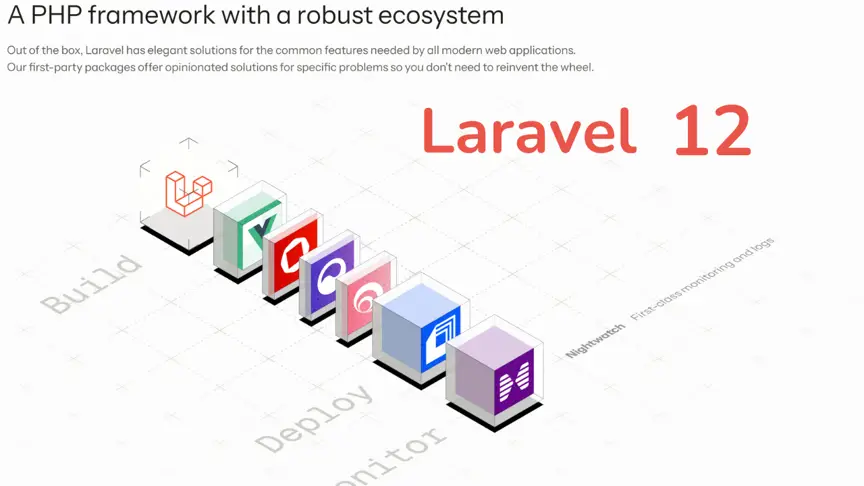Comparing CodeIgniter, Laravel, and CakePHP in 2025: Which PHP Framework Should You Choose?

Kritim Yantra
May 11, 2025
If you're building a PHP application in 2025, you're likely asking:
Which framework should I choose—Laravel, CodeIgniter, or CakePHP? 🤔
Each framework has its own strengths, community, and development style. This guide will help you compare the three leading PHP frameworks and choose the one best suited for your project.
🧩 What We’ll Cover:
- Learning Curve & Developer Experience
- Performance & Speed
- Security Features
- Community & Ecosystem
- Built-in Tools & Features
- Which One to Use (Use-Cases)
1. 🎓 Learning Curve & Ease of Use
✅ CodeIgniter
- Super lightweight and beginner-friendly
- No Composer or complex setup—just unzip and go
- Clear, minimalistic MVC structure
🔥 Laravel
- Offers rich features but has a steeper learning curve
- Requires Composer and Artisan CLI
- Ideal for developers comfortable with object-oriented programming
🍰 CakePHP
- Follows "Convention over Configuration"
- The "Bake" tool auto-generates code (models, controllers, views)
- Great for developers who like structure and fast scaffolding
2. ⚡ Performance & Footprint
CodeIgniter
- Known for speed and low resource usage
- Great for shared hosting and small servers
Laravel
- Slightly heavier due to rich features
- Optimized using caching, queues, and OPCache
CakePHP
- Balanced performance: not as fast as CodeIgniter but lighter than Laravel
- Internal layers like ORM and validation affect memory usage a bit
3. 🔐 Security Features
| Feature | Laravel | CodeIgniter | CakePHP |
|---|---|---|---|
| CSRF Protection | ✅ Built-in | ✅ Basic Support | ✅ Built-in |
| SQL Injection Guard | ✅ Eloquent ORM | ✅ Prepared Queries | ✅ ORM with Params |
| XSS Protection | ✅ HTML escaping | ✅ XSS filter | ✅ Auto escaping |
| Auth System | ✅ Breeze, Jetstream | ❌ Manual/3rd-party | ✅ Basic Auth Support |
Laravel offers the most robust security stack out of the box, but all three support secure practices if implemented correctly.
4. 🌍 Community & Ecosystem
Laravel
- Massive global community
- Thousands of ready-made packages (Packalyst)
- Annual Laracon conferences
- Active YouTube/Blog tutorials
CodeIgniter
- Smaller but loyal and active community
- Good documentation
- Fewer plugins, relies on third-party resources
CakePHP
- Strong core team
- Helpful documentation
- Less active than Laravel but still maintained
5. 🧰 Tools & Built-In Features
| Feature | Laravel | CodeIgniter | CakePHP |
|---|---|---|---|
| ORM | Eloquent | Lightweight (Gas ORM) | Built-in ORM |
| Templating | Blade | Basic PHP views | PHP-based templates |
| CLI Tool | Artisan | ❌ (optional tools) | Bake Console |
| Routing | Resourceful | Basic | Convention-based |
| Code Generation | php artisan make |
❌ | bin/cake bake |
| Testing | PHPUnit | Unit Test Framework | PHPUnit/Selenium |
Laravel leads with the richest toolbox. CakePHP comes second with its powerful "Bake" scaffolding. CodeIgniter remains lean and simple.
6. 🧠 When Should You Use Each?
🟢 Use CodeIgniter if:
- You want something lightweight and fast
- You're working on a small to medium project
- You prefer fewer dependencies and simpler deployment
🔵 Use Laravel if:
- You’re building modern, complex web applications
- You want elegant syntax, first-party tools, and top-tier community support
- You need real-time features, queues, or advanced API support
🟣 Use CakePHP if:
- You like convention-driven development
- You want rapid prototyping with auto-generated code
- You prefer a balanced middle-ground between CodeIgniter and Laravel
🏁 Final Thoughts
In 2025, all three frameworks are stable, well-maintained, and suited for different types of developers and projects.
| Framework | Best For |
|---|---|
| Laravel | Large-scale, modern web applications |
| CodeIgniter | Lightweight, fast projects |
| CakePHP | Structured rapid development |
👉 Choose the one that fits your project needs, your team’s skill level, and your preferred development workflow.
Comments
No comments yet. Be the first to comment!
Please log in to post a comment:
Sign in with GoogleRelated Posts
 Kritim Yantra
Kritim Yantra
 Kritim Yantra
Kritim Yantra
